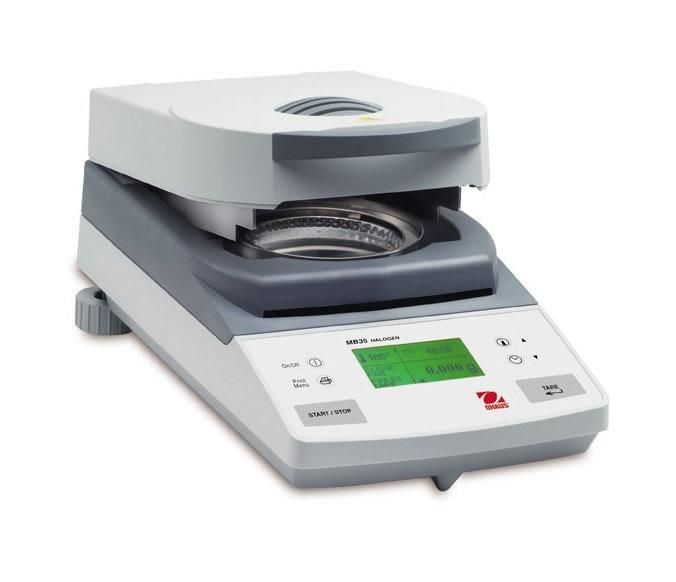Moisture Analyzer Usage
1. Plug in the power cord, open the heating compartment, and put the bracket with the handle up. Be careful not to touch the instrument.
2. From a box of sample trays, take one out and place it on the bracket with the handle and close the heating chamber.
3. Press the switch key, the instrument displays 0.000 , and the machine is warmed up.
4. After half an hour, press the tare button and the instrument displays 0.000g.
5. Then open the heating chamber, put the sample to be called in the dish, put 5-10 grams.
6. Close the heating chamber and press the start button to start measuring the moisture.
7. After a few minutes, the instrument will automatically stop and make a sound. At this point, the measurement will end and the instrument will display the moisture of the sample being tested.
8. To re-measure another sample, press the reset button to open the heating chamber, take the sample on the weighing pan, re-sample the sample, and repeat the above steps (no need to preheat).

Moisture Analyzer Usage Precautions
1. When the moisture analyzer is in use, the system must be completely sealed. The connection of the Karl - Fischer reagent liquid path of the moisture analyzer must be tightly fastened, from the reagent bottle to the metering pump to the reaction cell. Otherwise, reagent leakage will directly affect the test. result. If the system is not sealed, another problem is that the Karl Fischer reagent absorbs air moisture during the test, which causes a delay in the titration end point.
2. Sampling should be accurate. Generally, 10 mg of water is required for the prescribed sample . As far as possible, a 10 ul sampler is used. This is the same for methanol reagent and ethyl ester. Because it is not only accurate and fast, it also prevents water droplets from sticking. After the same pick and place, care should be taken to shorten the opening time of the reaction tank.
3. Magnetic stirring speed adjustment: In the reaction tank, because the titration reagent is added locally, and the electrode is not in one place, the stirring speed is preferably so fast that no turbulence is formed, so that the end point can be reached as quickly as possible.
4. The titration speed setting must be fast and slow first, and the drip timing should be fast to minimize the test time, and the strain is slow when approaching the end point, which can improve the measurement accuracy.
5. After each test is completed, the system must be emptied of Karl - Fischer reagent, and then cleaned with methanol, water cleaning systems do not, because it is not easily volatilized, resulting in the next test when the Karl - Fischer The reagent calibration is not true. Cleaning with methanol will ensure the accuracy of the measurement.
6. It should be noted that in daily life, the moisture analyzer should be kept away from strong magnetic fields, avoiding the electronic display jumping when working, and abnormal phenomena appear. Especially for manual moisture analyzers, since the glass-automatic burette must be used to meter the Karl - Fischer reagent and the methanol solvent, the glass burette itself must be connected to the outside due to the equilibrium pressure.
Shandong Longze Mechanical Equipment Co.,Ltd , https://www.pelletmachinefactory.com